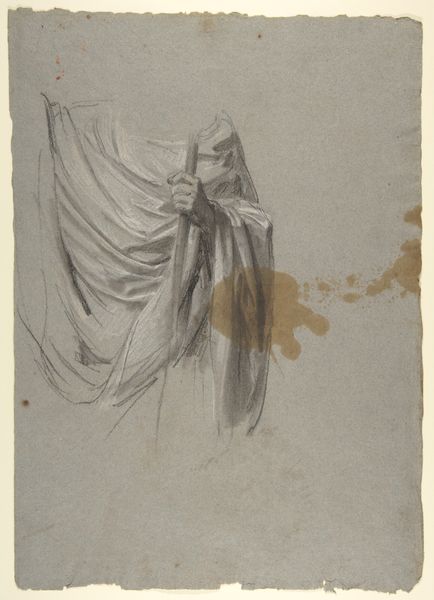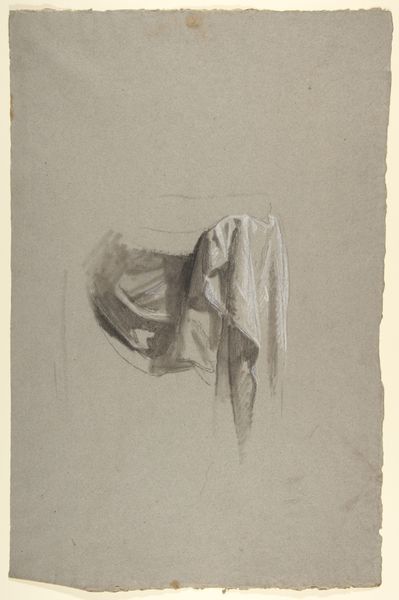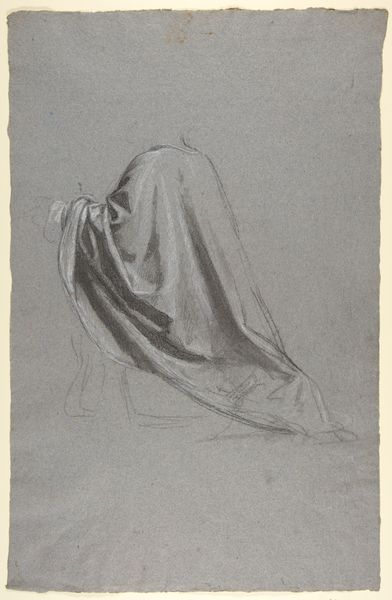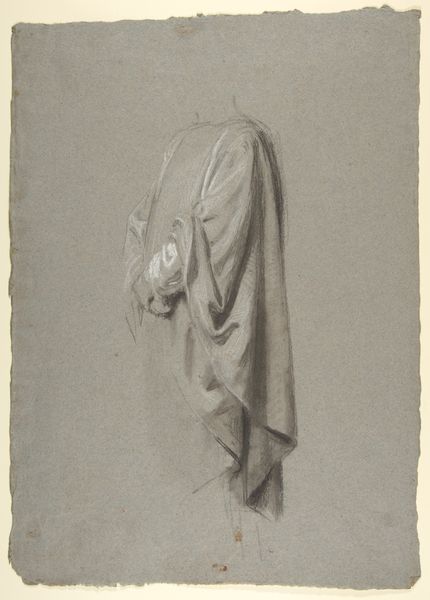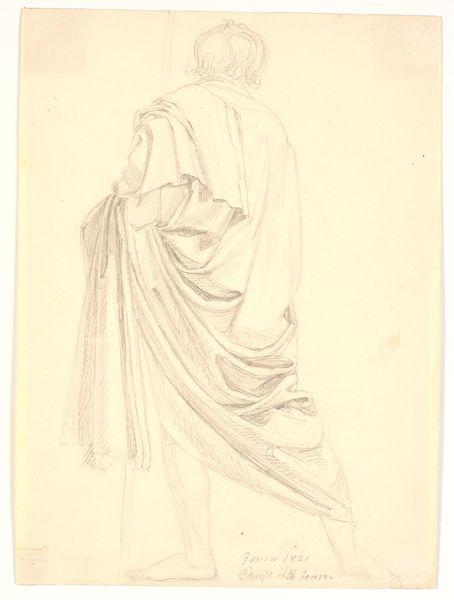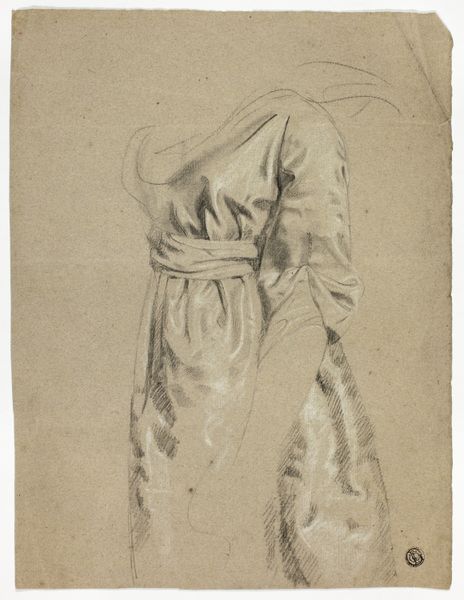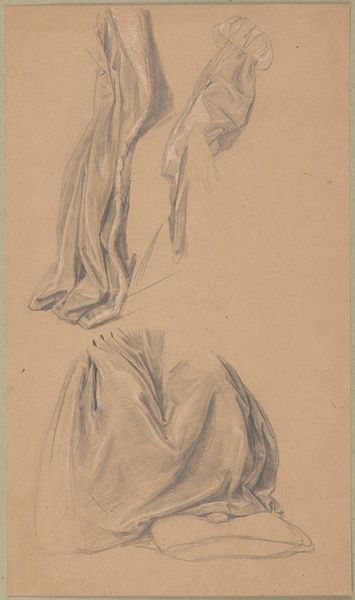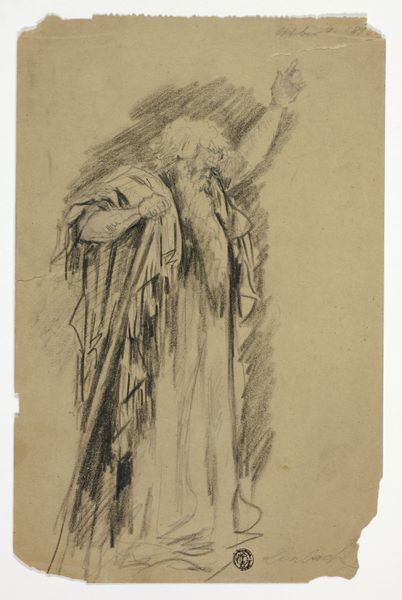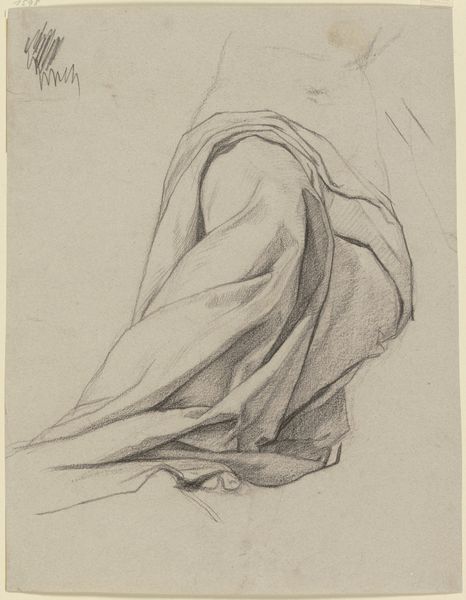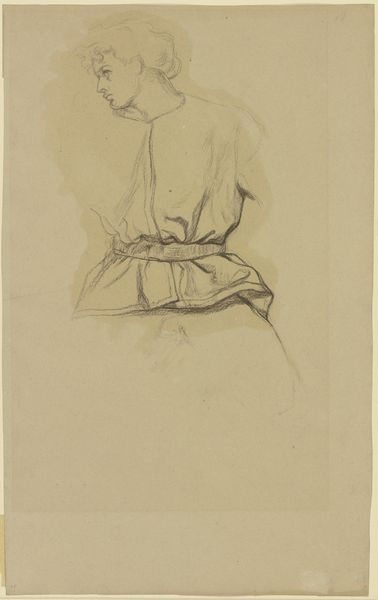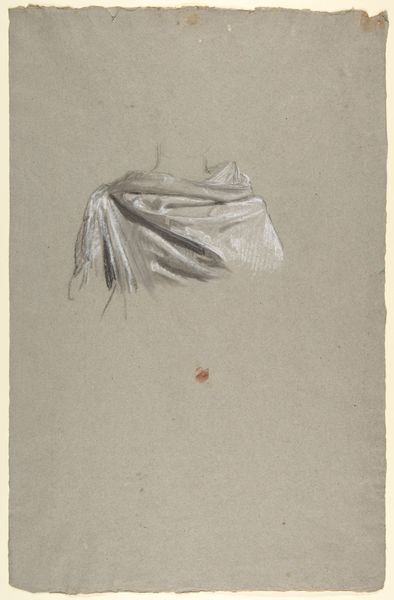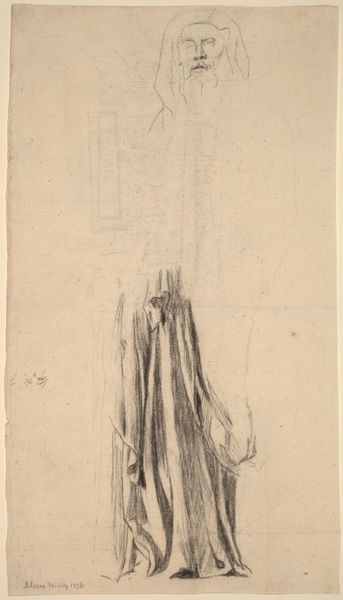
Drapery Study for Saint Remi (middle register; study for wall paintings in the Chapel of Saint Remi, Sainte-Clotilde, Paris, 1858) 1820 - 1875
0:00
0:00
drawing, print, pencil
#
drawing
# print
#
figuration
#
pencil drawing
#
pencil
#
history-painting
#
academic-art
Dimensions: 18 5/8 x 12 1/16 in. (47.3 x 30.6 cm)
Copyright: Public Domain
Editor: Here we have Isidore Pils' "Drapery Study for Saint Remi," created sometime between 1820 and 1875 using pencil. There’s a real softness in the folds of the fabric that feels almost dreamlike. What significance do you see in Pils focusing so intently on drapery? Curator: It’s interesting, isn't it? At first glance, it’s 'just' drapery, but we can use a feminist lens to unpack how clothing both conceals and reveals, especially in historical depictions of the body. It speaks to societal constraints placed on representation. Academic art, from which Pils' artistic practice developed, valued this kind of figure study. Editor: I hadn’t thought of clothing that way – concealment as a statement. It also looks like he's holding something…perhaps a staff? Curator: Precisely. The hands grasping an object. Think about the performative aspect of clothing within religious or historical contexts – its connection to power structures. How might the choice of fabric, its weight, its fall, reinforce societal hierarchies or even challenge them, depending on the wearer's status? Editor: So, looking at drapery, we’re also seeing a narrative about control and access. Did the choice of medium, the humble pencil, play into that at all? Curator: Absolutely. Pencil allows for an immediacy and a softness that reinforces that sense of quiet reflection. This study provides space to analyze those social underpinnings represented, that painting or even sculpture could never achieve in such a raw or intimate way. Editor: This has given me so much to think about! The drawing isn’t just about capturing light and shadow, but reflecting on societal power and constraint. Thank you! Curator: My pleasure! Hopefully, listeners are encouraged to question not only *what* is depicted, but *how* that imagery has shaped our understanding of the world and who gets to shape that understanding.
Comments
No comments
Be the first to comment and join the conversation on the ultimate creative platform.
